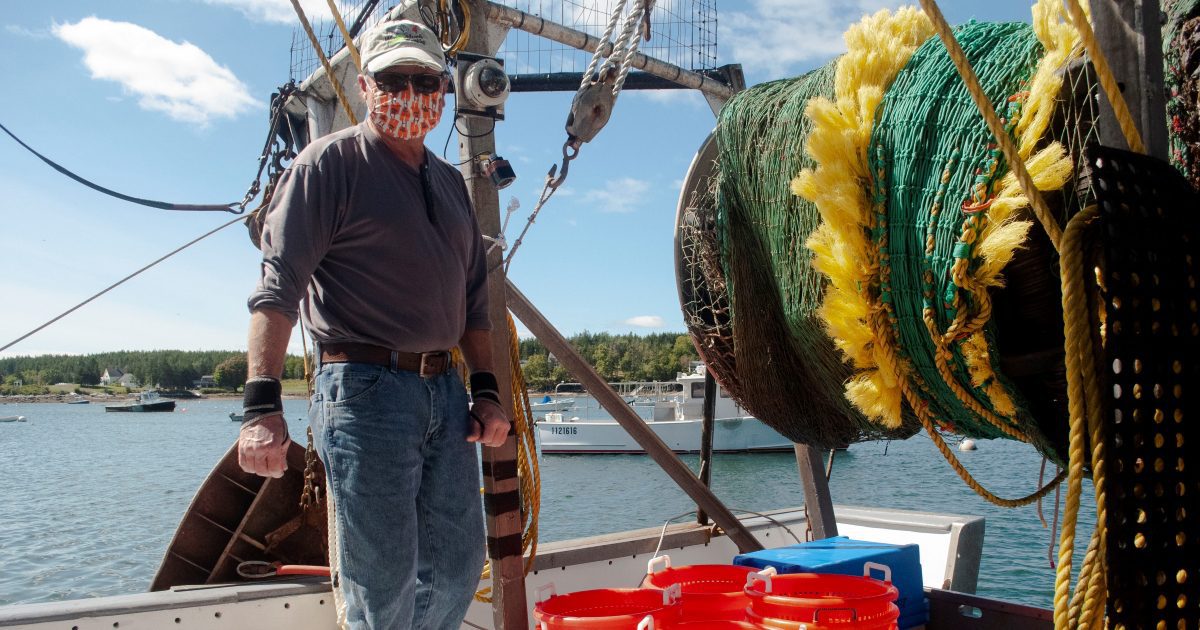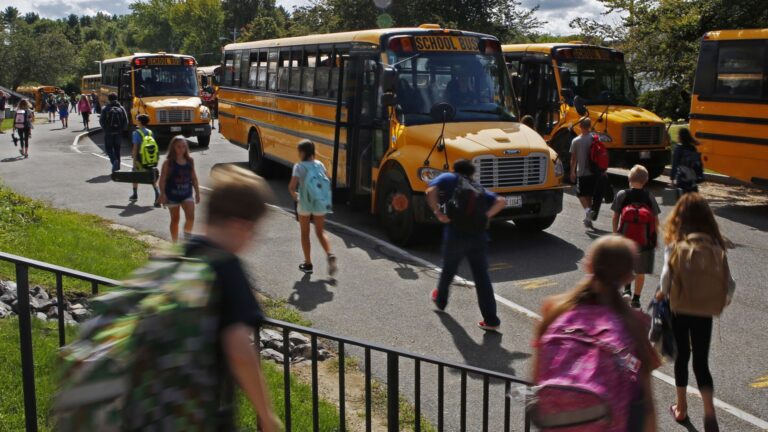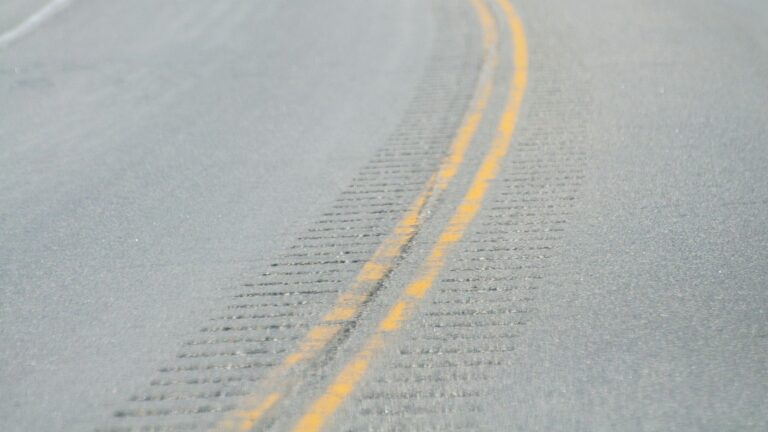After returning home for a hot meal and quick snooze following three days alone at sea, Randy Cushman wakes up at 3:30 a.m. to begin the final steps of his fish and data processing in the sleepy, pine-lined fishing village of Port Clyde.
Cushman took his first two-day groundfishing trip out of this harbor with his father when he was 5 years old. Now, over 40 years later, Cushman counts and prepares fish all morning with his wife — who is also his business partner — to get hundreds of pounds of fish ready for local markets.
Once the fish are sorted, Cushman’s final step is to mail a hard drive containing video of what he caught and discarded during his trip for review. Cushman’s 50-foot boat — the Ella Christine — was one of the three Maine vessels that six years ago spearheaded what’s been the longest electronic monitoring project in New England.
The project, designed to prevent overfishing in the region’s waters, includes more than 30 boats across New England. It was born from a collaboration between the Maine Coast Fishermen’s Association, The Nature Conservancy, the Gulf of Maine Research Institute and Ecotrust Canada. It allows fishermen to use cameras strapped to their ships to track landings and discards, instead of human observers.
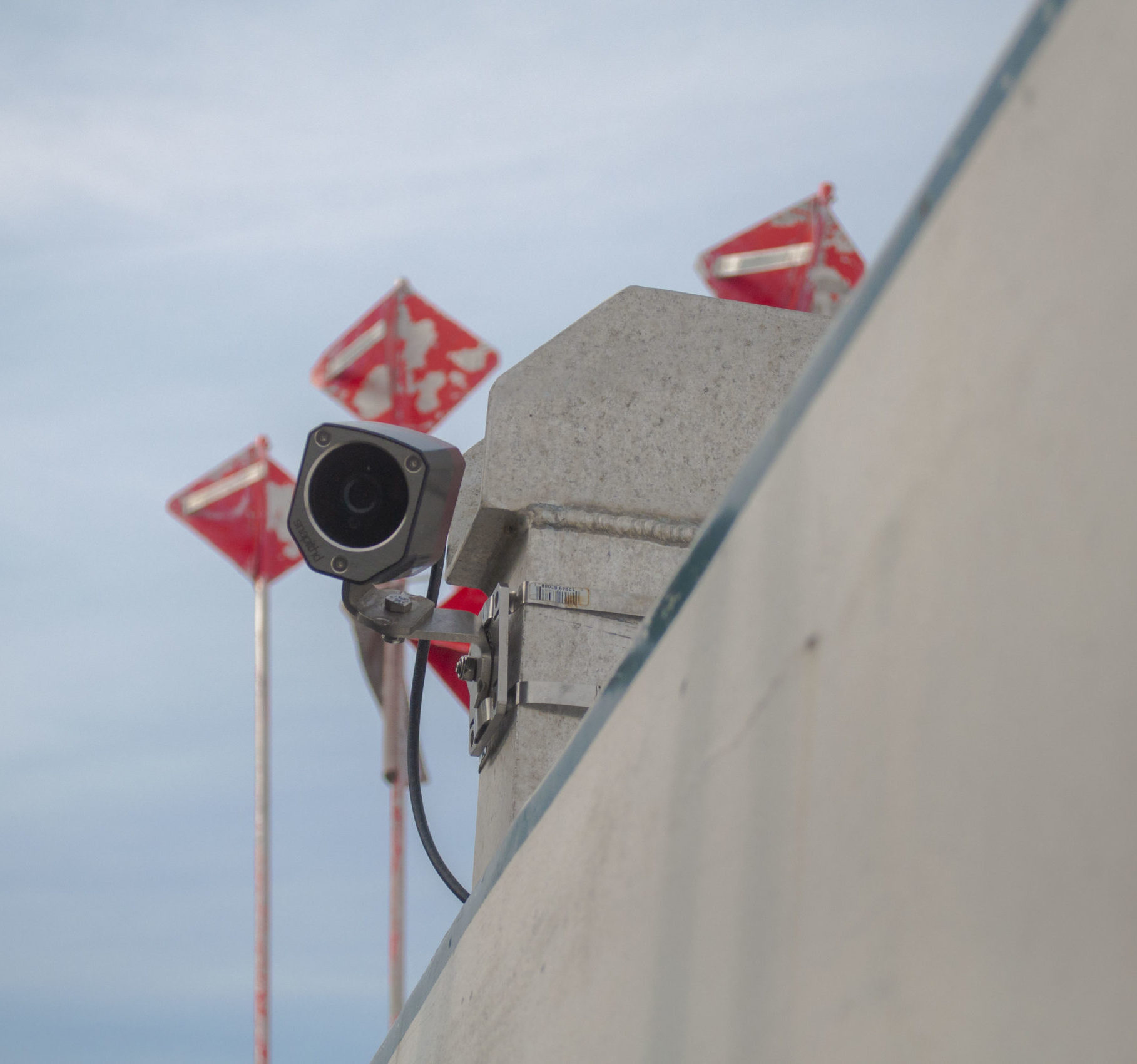
Enabled in part by the technology, regulators are considering increasing monitoring requirements to better inform scientists about the health of fish stocks, which helps determine quotas for various groundfish caught each year. The New England Fisheries Management Council (NEFMC) is scheduled to vote on changes to its groundfish management plan at a virtual meeting Sept. 30, culminating four years of research.
The 18 voting members of the council span across the Gulf of Maine’s coastal economies, which include Maine, Connecticut, Massachusetts, New Hampshire and Rhode Island.
Monitoring has increased from 25 percent in 2018 to 30 percent in 2019 and 40 percent this year. A portion of the amendment proposes changes to the percentage of at-sea monitoring.
The council’s preferred alternative is 100 percent monitoring, but levels of 25, 50 and 75 percent will also be considered.
“If we’re going to have accurate stock assessments, we need 100 percent coverage under this management system,” said Cushman.
But, the prospect of increased monitoring concerns Terry Alexander, a fisherman who represents Maine on the NEFMC and operates his 62-foot boat out of Massachusetts. Alexander said requiring 100 percent monitoring could be too costly for fishermen, who have had to pay for part of the oversight in previous years.
This year, the federal government financed 100 percent of at-sea observers in New England for the first time. But if the monitoring requirement increases from 40 percent to 75 to 100, it is uncertain how much federal funding will follow.
“This right here is a death nail for the fishery,” said Alexander. “We’re spending a ton of money on coronavirus relief around the country, so I don’t know what the appetite will be for funding 100 percent monitoring on these boats … I don’t know where we rank in that priority.”
Right now it costs about $700 for a human observer to monitor what’s landed and discarded over 24 hours, compared to $100-700 for an observer to review footage, according to the amendment’s Draft Environmental Impact Statement (DEIS).
Installing electronic monitors on a boat costs roughly $10,000, which groups like The Nature Conservancy cover to access the data.
“Initial costs of installing (electronic monitors) may be high, which may have negative impacts in the short term,” the DEIS says, “but over the long term EM may be more cost-effective than human at-sea monitors.”
Cameras will remain optional
If the rule change passes, fishermen would choose which monitoring method best suits their boat and crew.
“There is nothing in this amendment that will force fishermen to put cameras on their boats,” said Geoffrey Smith, marine program director at The Nature Conservancy.
Some fishermen are wary of adding cameras. Alexander said the technology only works for “a select few” boats.
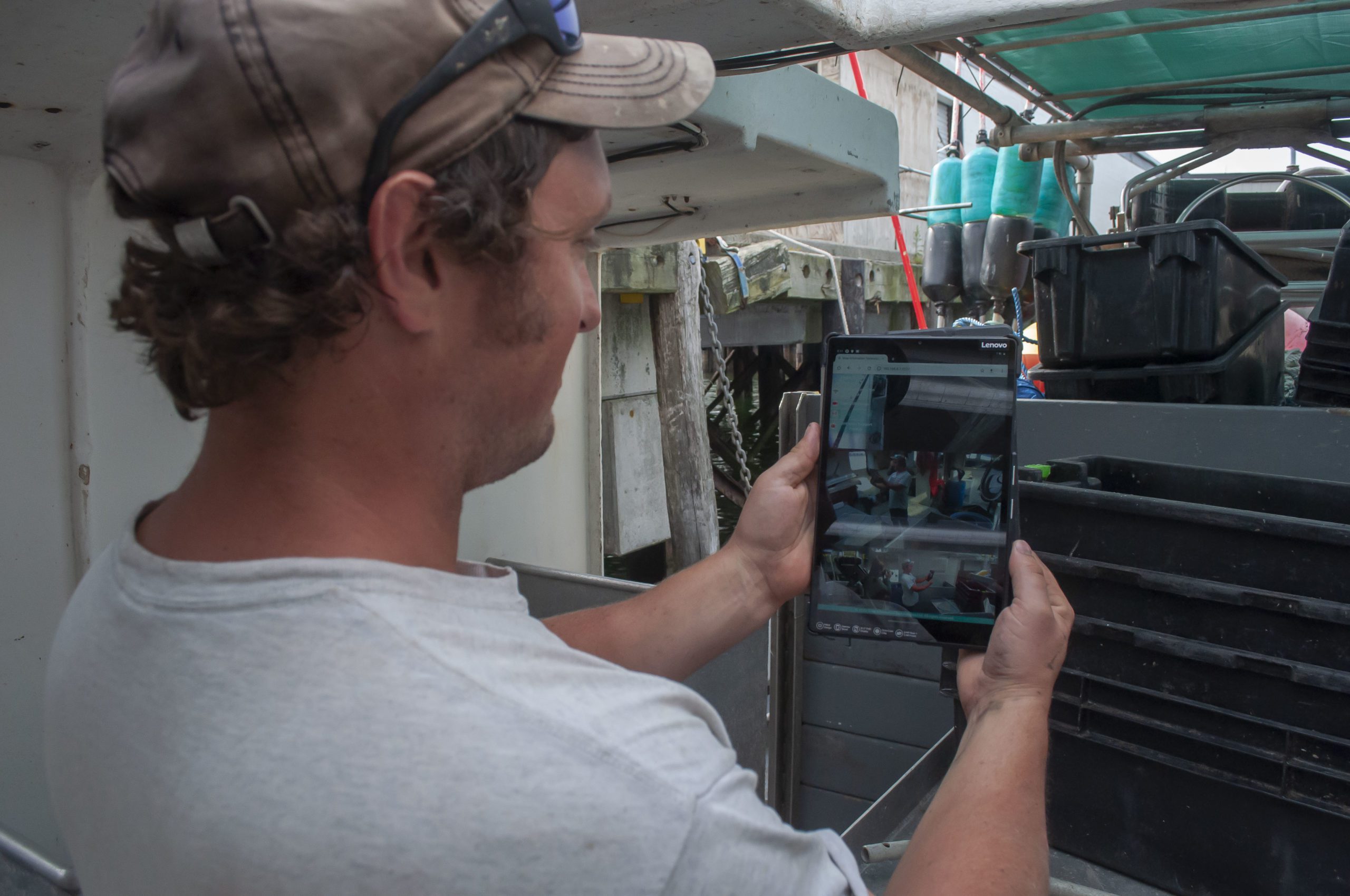
Captains of smaller ships have more readily embraced the benefits. Tight quarters can make it difficult to accommodate another body.
“There’s a lot of stress on dealing with the observers,” said Eben Nieuwkirk, who recently joined the electronic monitoring program and fishes his 47-foot boat, the Shannon Kristine, out of Portland.
Fishermen have to give 48-hour notice before they fish so they can be assigned an observer. The system binds them to the schedule of the observer but cameras could allow them to get on the water quicker.
Nieuwkirk has had bad experiences with hostile observers and expressed concern about observer bias on commercial fishing trips.
People fish differently — they retain fewer fish, fish for less time and obtain lower revenues — when an observer is on board versus when no one is watching, said Chad Demarest, an economist with the National Marine Fisheries Service whose studies were included in the impact statement.
“What is actually motivating those differences is almost certainly a response to the value of quota,” he said. “When the value of quota gets close to or exceeds the price of the fish at the dock, fishermen have a very strong incentive to throw that fish overboard if they catch it.”
Quotas were not always a groundfishing industry standard. In 2006, the Magnuson-Stevens Act, which sets rules for national fishery policy, was reauthorized to include stricter rules for overfishing and accountability measures to help rebuild fish stocks.
New laws to rebuild fish stocks
To abide by these federal laws, the NEFMC started enforcing stricter catch limits on certain species. They replaced the days-at-sea fishing model for a sector system that incorporated pound-per-pound quotas on fish species, and annual instead of daily catch limits.
If I have 100 percent accountability for my fish, then they’ll be able to give me my full quota.”
— Eben Nieuwkirk, fisherman
“In most fishermen’s lives, the sector system is just a small part of their fishing history,” said Demarest.
Before the sector system, fishermen still had to throw back juvenile groundfish that were under legal size, but were allowed to discard legal-sized groundfish. Fishermen would do so if it cost them more money to land the fish than it would to get the fish to market. With the sector system, that’s illegal.
But the new model also had an unwanted side effect — a dwindling fleet of groundfish sector vessels. There were 299 active groundfish sector vessels in 2010; today there are 179, according to the DEIS.
The New England groundfishing industry switched to a sector system in 2010. With limited monitoring, scientists are not able to tell whether the quotas are effective, or whether the decline of boats has helped populations rebound.
“We are underestimating the total amount of catch that’s happening right now. And therefore, we can’t say with certainty that we are preventing overfishing by enforcing annual catch limits, and better data is going to help managers prevent overfishing. And it will give better information to stock assessment scientists,” said Smith.
The hope for some fishermen is that more accurate catch data with increased monitoring will lead to rising quotas.
“If I have 100 percent accountability for my fish, then they’ll be able to give me my full quota,” says Nieuwkirk.
Incentivizing camera installs
To urge fishermen to install the electronic monitors, groups like The Nature Conservancy are buying up quota and selling it back to participants at less than half the cost.
“For the state of Maine, what The Nature Conservancy has done has been huge,” said Cushman, the Port Clyde fisherman. “They bought them permits in hopes that they’ll stay in this area — in this community — and young fishermen will come along and be able to get into the fishery.”
Not all fishermen see it that way.
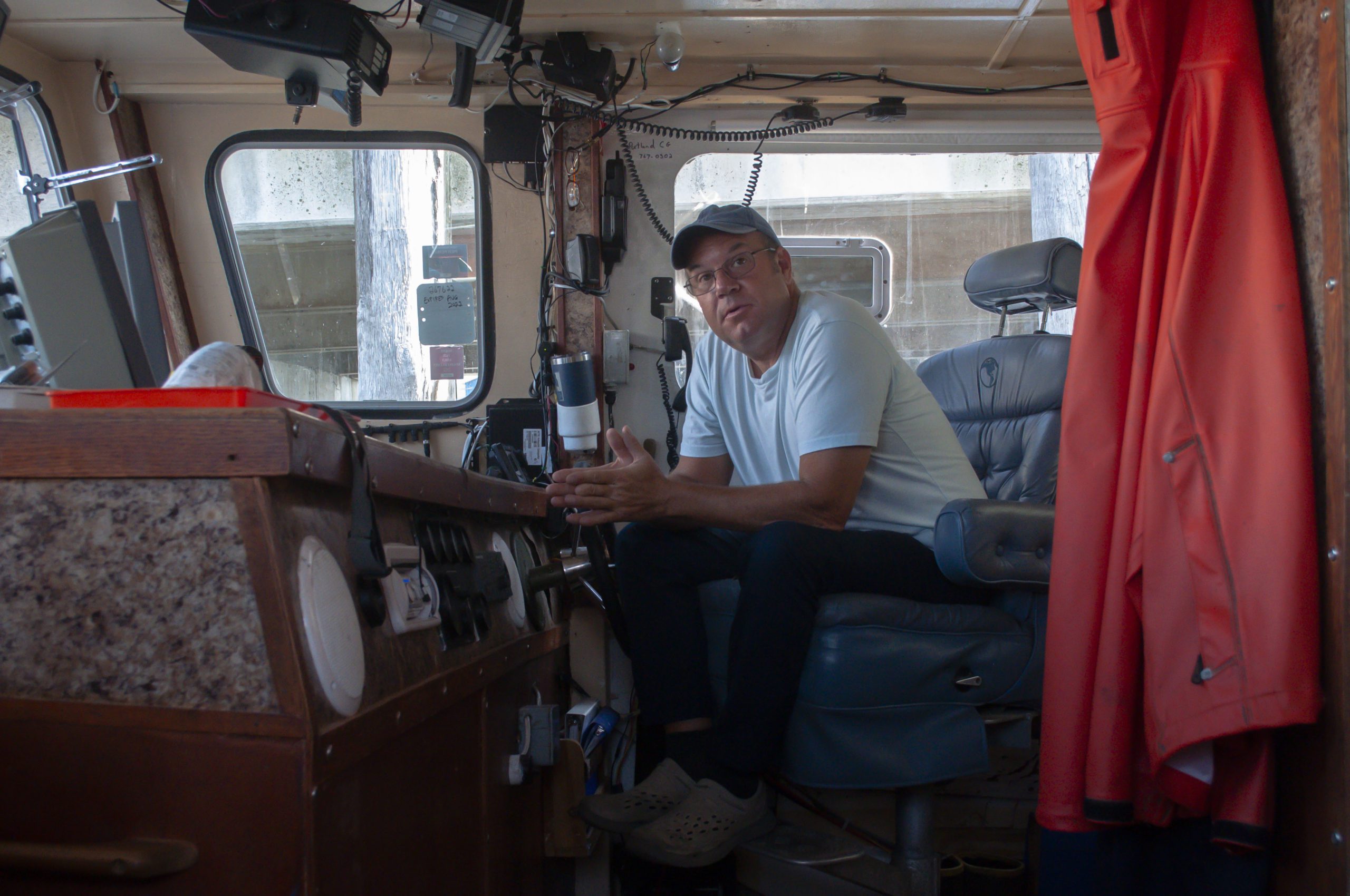
Brian Pierce, who fishes out of Portland, approached The Nature Conservancy to get the electronic monitoring cameras installed five years ago with several quotas increasingly down.
“We struggle and that’s why we’re forced to go eat that carrot that the Nature Conservancy and groups like that dangle in front of you,” said Pierce. “You can be stubborn and not want to do it, but in the end the results are not being able to fish.”
Groundfish in the Northeast Atlantic include 13 species, all with unique population dynamics, distribution patterns and monitoring challenges. Fishermen target certain species based on the gear they have, what they’re accustomed to fishing, and what the market bears.
As quotas fluctuate with species declines or booms, so does the ability of fishermen to make the most money.
“Certain stocks are more and more constrained for sure,” said Jonathan Labaree, a Gulf of Maine Research Institute scientist working on the electronic monitoring project. Understanding how to balance the needs of the fishermen and the scientists “is kind of the hundred million dollar question,” he said.
Pierce sees the cameras as a way to make up for quota cuts and lost income, which are more urgent than surveillance concerns.
“If the quota accurately reflected what there is out there on certain stocks, this wouldn’t be an issue,” said Pierce. “I don’t have anything to hide. I’ll run the cameras 100 percent of the time, but I can’t afford to pay for it 100 percent of the time if that government money dries up.”
The pending NEFMC amendment aims to help close the gap between what the fishermen report at sea and what the scientists predict from their models — a problem that permeates in fisheries across the nation.
“We need rules and regulations, hands down,” said Cushman from his captain’s chair. “We can’t just treat it like the wild, wild west. We as human beings can wipe out any natural resource.”


